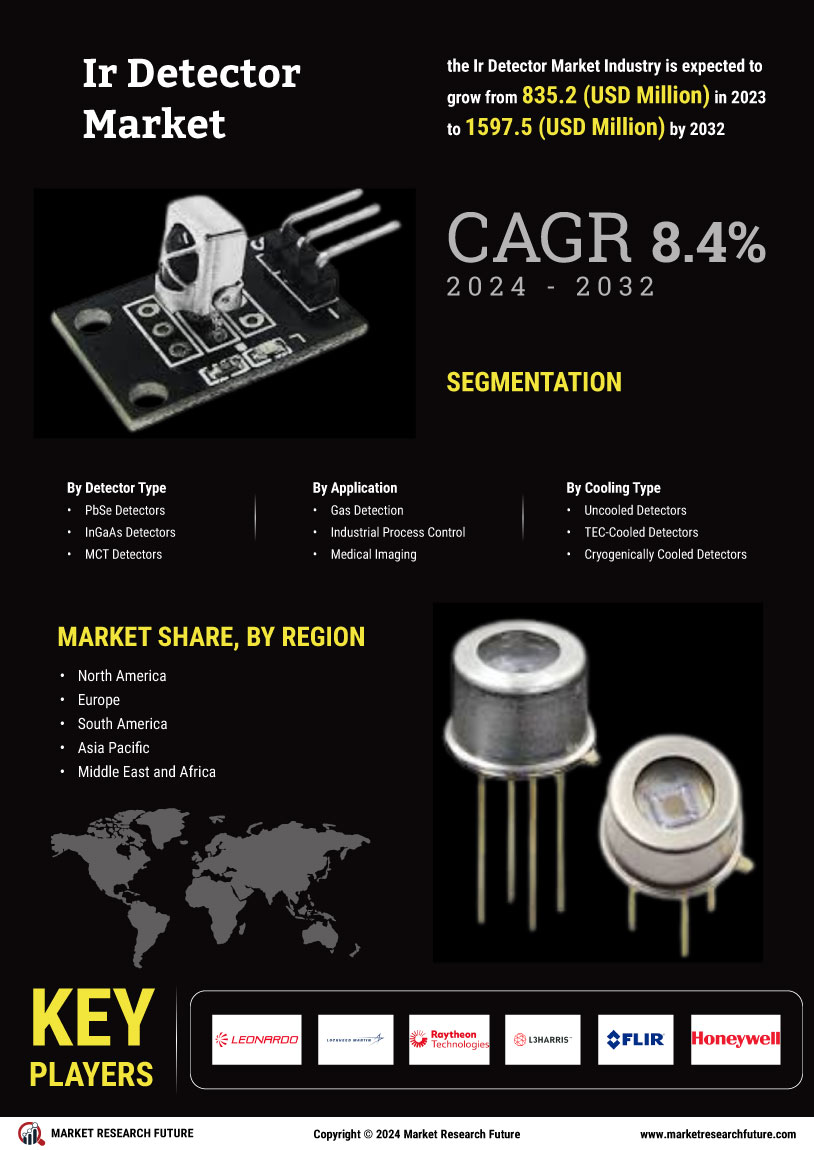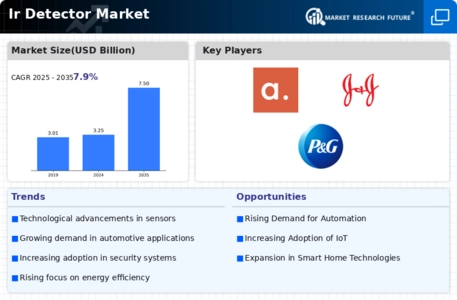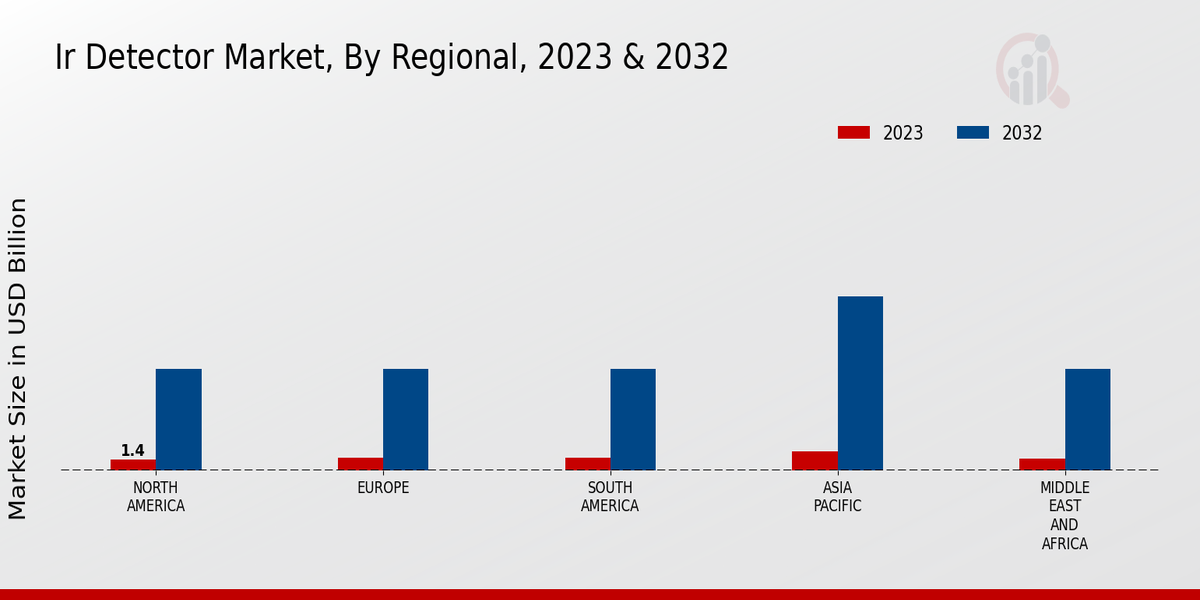Market Growth Projections
The Global Ir Detector Market Industry is poised for substantial growth, with projections indicating a market value of 3.25 USD Billion in 2024 and an anticipated increase to 7.5 USD Billion by 2035. This growth trajectory suggests a compound annual growth rate (CAGR) of 7.9% from 2025 to 2035. Such figures reflect the increasing adoption of infrared technology across various sectors, driven by advancements in detection capabilities and the rising demand for security solutions. The market's expansion is likely to be fueled by ongoing technological innovations and the integration of infrared detectors into consumer electronics and automotive applications.
Expansion of Consumer Electronics
The expansion of consumer electronics significantly impacts the Global Ir Detector Market Industry. Infrared detectors are increasingly integrated into various consumer devices, including smartphones, tablets, and smart home appliances. This integration enhances functionalities such as gesture recognition and remote control capabilities, making devices more user-friendly and efficient. As consumers demand more advanced features, manufacturers are compelled to incorporate infrared technology into their products. This trend is expected to drive market growth, as the increasing penetration of smart devices creates a favorable environment for infrared detector adoption, further solidifying their role in the consumer electronics landscape.
Rising Demand for Security Solutions
The Global Ir Detector Market Industry experiences a notable surge in demand for advanced security solutions across various sectors. This trend is primarily driven by increasing concerns regarding safety and surveillance. For instance, the integration of infrared detectors in security systems enhances the ability to detect unauthorized access, thereby improving overall security measures. As organizations prioritize safety, the market is projected to reach 3.25 USD Billion in 2024, reflecting a robust growth trajectory. The emphasis on smart home technologies further propels the adoption of infrared detectors, indicating a shift towards more sophisticated security solutions.
Growing Adoption in Automotive Applications
The automotive sector increasingly adopts infrared detectors, significantly influencing the Global Ir Detector Market Industry. These detectors are utilized in advanced driver-assistance systems (ADAS) to enhance vehicle safety and performance. For instance, infrared sensors facilitate pedestrian detection and night vision capabilities, contributing to safer driving experiences. As the automotive industry shifts towards automation and enhanced safety features, the demand for infrared detectors is likely to rise. This trend is expected to contribute to the market's growth, with projections indicating a market value of 7.5 USD Billion by 2035, underscoring the importance of infrared technology in modern vehicles.
Environmental Monitoring and Energy Efficiency
Environmental monitoring and energy efficiency initiatives are emerging as key drivers in the Global Ir Detector Market Industry. Infrared detectors are utilized in various applications, including building automation and energy management systems, to monitor temperature and detect heat loss. This capability is crucial for optimizing energy consumption and reducing operational costs. For instance, infrared sensors can identify areas of heat leakage in buildings, enabling timely interventions to enhance energy efficiency. As sustainability becomes a priority for organizations worldwide, the demand for infrared detectors is likely to grow, aligning with global efforts to promote energy conservation and environmental responsibility.
Technological Advancements in Infrared Detection
Technological innovations play a pivotal role in shaping the Global Ir Detector Market Industry. The development of more sensitive and accurate infrared detectors enhances their application in various fields, including automotive, healthcare, and industrial automation. For example, advancements in sensor technology allow for improved detection capabilities in low-light conditions, which is crucial for nighttime surveillance. These innovations not only enhance performance but also reduce costs, making infrared detectors more accessible to a broader range of industries. As a result, the market is expected to grow significantly, with a projected CAGR of 7.9% from 2025 to 2035.













